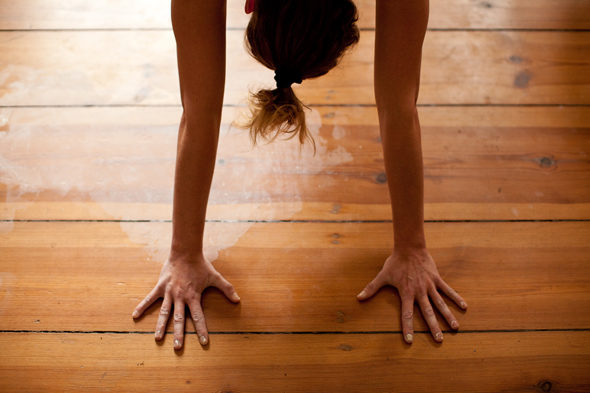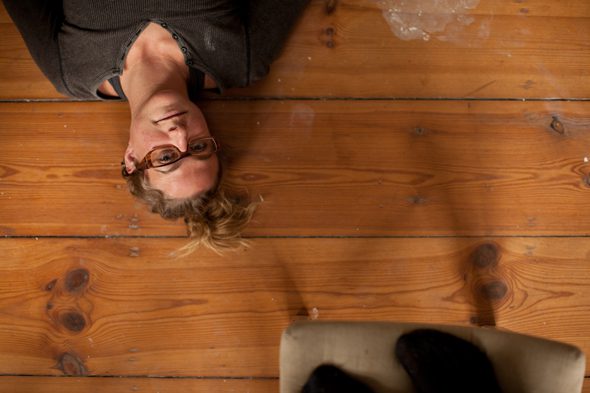by Jeni Fulton, photos by Anthony Georgis // Feb. 13, 2012
Allison Fall’s studio is an extension of the kitchen, the closet, and recently, the bedroom. Her studio is intimately tied to her performative practice, a space to create the environments in which she embeds her performances. A place where she spends months manually casting the constituents of our day-to-day, assembling towers of plates and fields of clay chips.
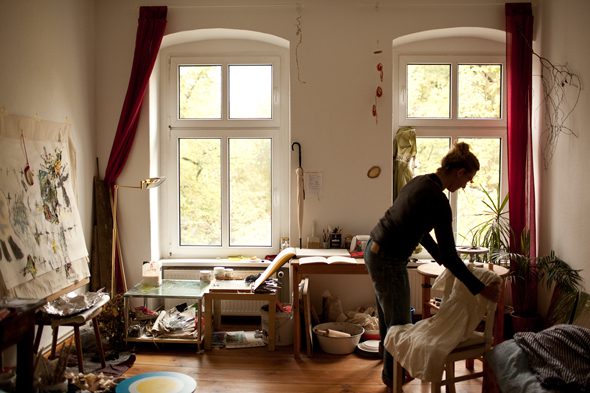
Her studio is a light-filled room in her apartment just on Zionskirchplatz in Mitte, opposite the Kaiser-Wilhelm financed church. Performances in various stages of development are on sight, from the sketchbooks Fall uses to “map” her pieces, palm-sized clay multiples (of which she crushed 8000 during the performance “Separation in tow”), raw clay. A parasol is propped in a pair of bronze boots, red high-heels are lined up against a wall. She takes me through the process of creating a performance: “While the performances are brewing in my brain, as they build up in my studio, the performance becomes clearer. When I did the spitting performance (Past Aggression surfaces at Unexpected Moments, Kim Bar 2011) I just had multiples in my studio. I walked around the Mauerpark flea market, and saw the wash basin, and though “oh, perfect”! So to create the performances, I’m also just taking in my day-to-day experiences and then using them, but also bringing in other experiences and the objects, so there are layers.” But nine times out of ten, she says, the performance will take on a life of its own, and she deviates from her original plan. “But it does feel good to have a plan going into to it and then seeing what ends up happening.”
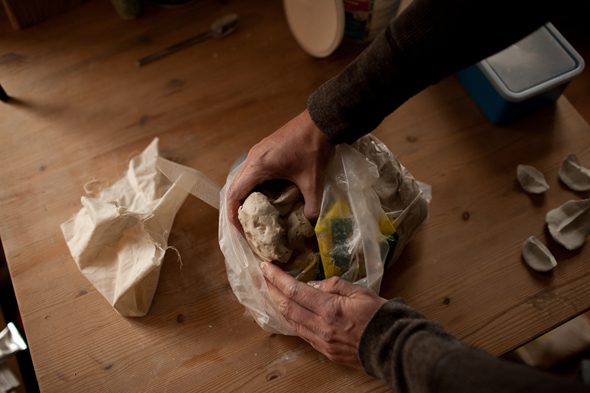
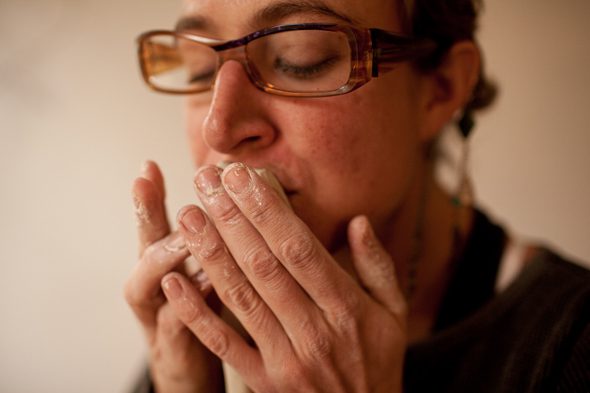
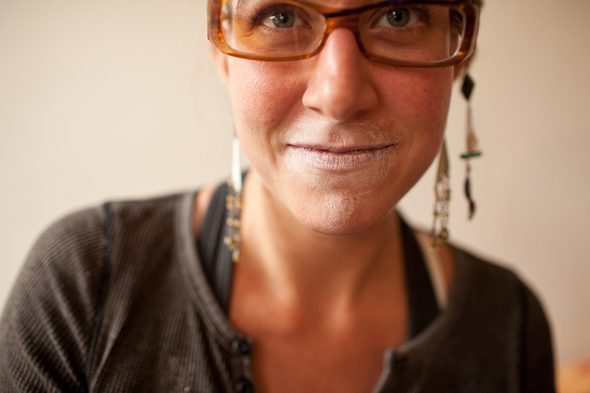
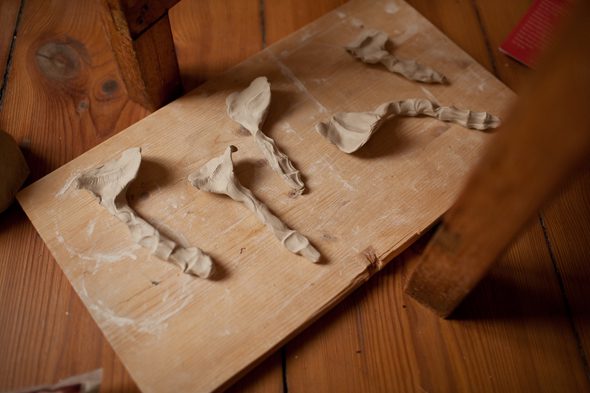
The floor displays traces of having clay worked on it, on a tray lie several obviously hand-cast spoons – Fall has been working with the idea of using her mouth to “imprint” shapes, and used it to mould the spoons. And then there are the aforementioned found objects: the parasol on the desk in addition to the one in the boots, the red high-heels, the bucket of clay. “It isn’t obvious what I’m going to be making, she says. “If you walk into my studio, you ask yourself who I am, and what I do. Having the objects there helps with this image in my head when I’m creating performances. And when it all comes together, I might use that random red shoe in my room if I feel it’s necessary.”
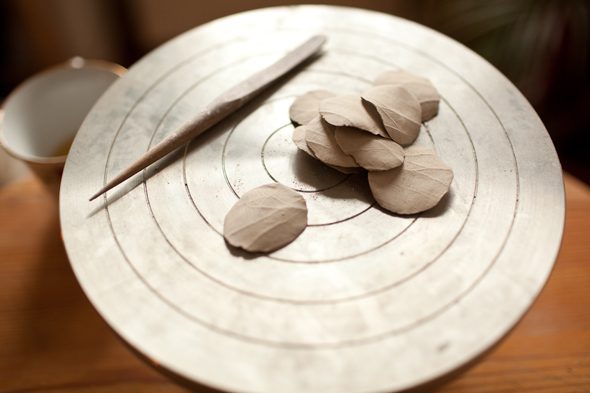
Fall was born in Ohio, and worked as a professional dancer from 18 onwards. She took her BFA in performance art at Ohio State University in 2002. After that she led a “double life” dancing and creating performances while making ceramics pieces – installations, vases, objects – on the side. In order to combine these disparate practices, she went to the School of the Art Institute (SAIC) at Chicago, where she took her MFA in 2010. There, the ceramics pieces became integral to her performative process. “I was no longer just making objects which had a function, I was making objects that would function in a new way. It became more about the responses of the objects to my actions, and more about associative functions – people seeing it or hearing it in the space.” Her MFA performance was a key transitory moment: “I made 15 000 raindrops, and it became about the moment and the sound they made when they hit the ground; it was about space, and sound, and movement. It was the first time where I was working out how the clay interacted with my body. It became clear to me that it wasn’t necessarily about making objects and putting my body into it, it was more about figuring out what a performance is, what an installation is, and then using myself and what I have in order to create what I want.”
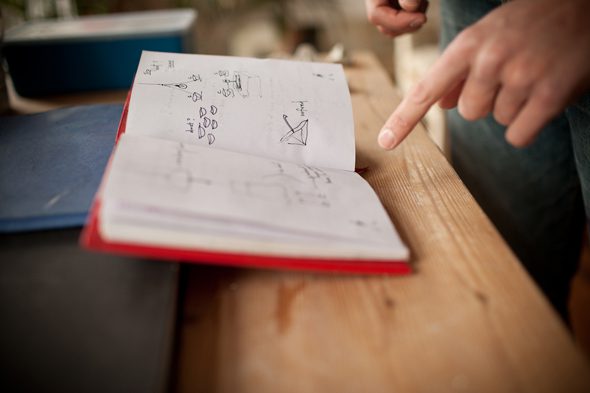
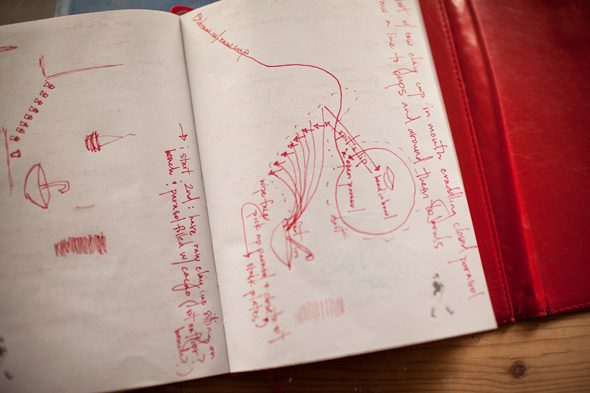
When she first arrived in Berlin, Fall lacked access to a studio space. Making a virtue of necessity, she altered her practice. “It was hard for me to work out how to create a performance without making the installative elements, without putting my hands on the objects. Forced out of my comfort zone, I had to come up with a new way of working, and that’s when I started using found objects.” She realizes now that this made her more versatile as an artist. While she still spends up to two years casting the multiples for her installation-led performances, using found objects enabled her to perform without an active studio practice. “It’s in my head, and I feel like I’ve matured as an artist. I will still do pieces that I spend two years assembling, but now I have the possibility of doing shorter-term pieces during that time so my work doesn’t become stagnant.” Having the props of past performances in her studio also influences future work. “For instance, in the Antinomies performance (galerie OPEN, Kreuzberg, 2011), I wasn’t planning on using the wash basin, but it made complete sense that they were there so I could wash my dress in them. It needed to be washed in that basin so the audience could understand what was going on.”
Allison Fall: “Delicacy” (2011), Performance, BerlinFalls performances all invoke the notion of intimacy, and this is reflected in her studio practice. Her references and sets are the domestic, her performances driven by her desire to understand her objects, touching her materials over and over. She also uses the associations we have with intimate objects to connect with her audience. “People can intuitively enter the piece through what the objects mean in their eyes, and they can “implant” their own experience whilst watching me. And then to see it in this other dimension, and to experience my performative actions – they start guessing, they have this impulse of wanting to know what’s on with these objects, because they thought they understood them. And then they are more open to entering, and wanting to be supportive, because of the relationship to the object in the first place.” Fall is currently working on a series of porcelain pillow imprints.
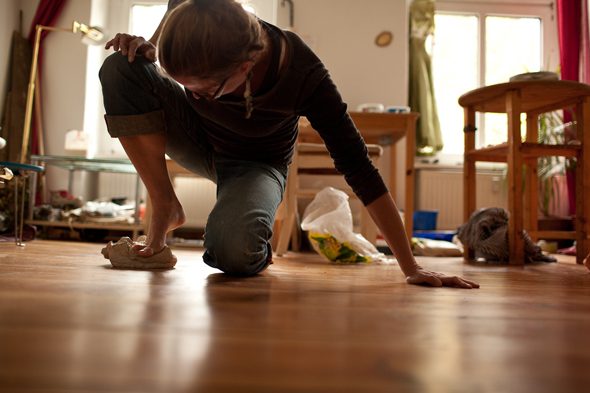
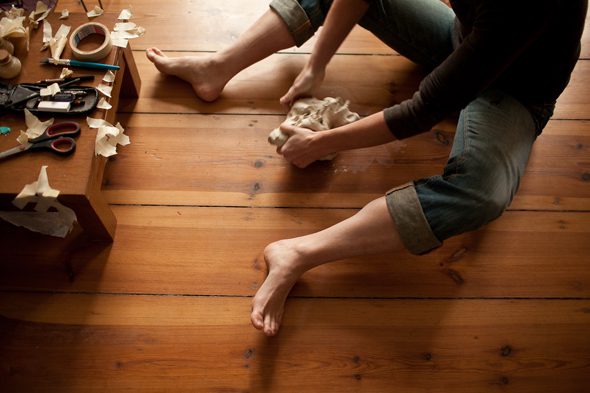
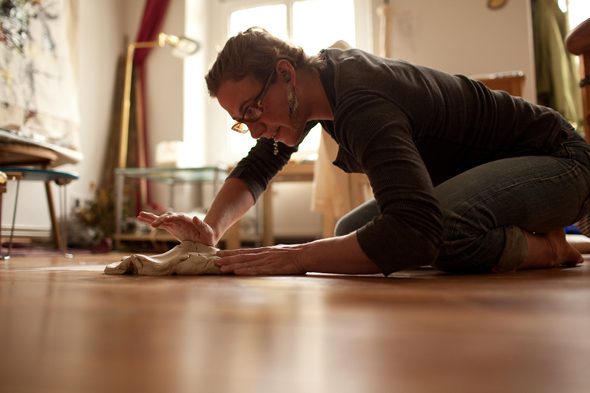
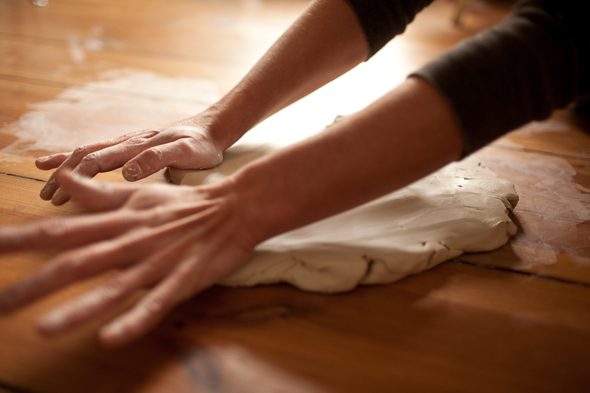
Artist Statement
Allison Fall writes delicately in space with repetition through the use of material and her body. Fall creates a tactile awareness of space by performing with objects, raw materials and handmade sculptural forms. Porcelain is simultaneously fragile and strong and its aspect of cleansing and its purity as a material evokes a new beginning. Fall’s own body is an integral material in her work, becoming conduit between the exhibition space and the audience. Fall has a vulnerable determination, using fragility and strength to balance a connection to our selves and to witness each other at a time when we have become conditioned to being distanced from one another. Fall breaks our isolation by creating an absurd vision in which one is immersed inside the struggle of allowing intimacy to penetrate.
